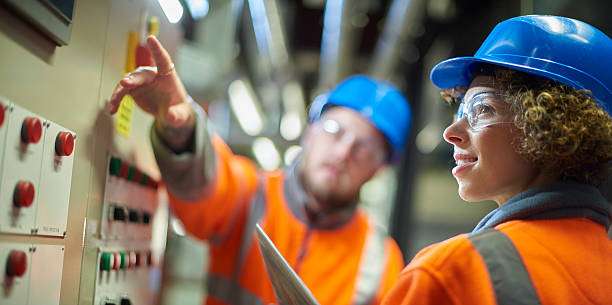Environmental transformations are having an impact on industries worldwide due to the rapid changes in climatic patterns. The heating and air conditioning (HVAC) business is one such area that is being severely impacted. The HVAC business is at a turning point as temperatures rise, bad weather occurs more frequently, and energy efficiency becomes more important. This article examines the various ways climate change affects the HVAC sector, from new technological developments to increased regulations.
Increasing Heat and a Rise in Demand
The HVAC industry’s most immediate impact from climate change is the growing need for cooling solutions. The need for air conditioning equipment grows as global temperatures rise, especially in urban locations where the urban heat island effect exacerbates heat retention. For HVAC companies, this increase in demand presents both opportunities and challenges.
The challenge for HVAC manufacturers and service providers is to meet the growing demand for their products while keeping costs down and quality high. However, this increase in demand offers a rich field for development and growth. Businesses investing money in R&D to create environmentally responsible and energy-efficient cooling systems will have an advantage over competitors in the dynamic market.
Severe Weather Conditions and Infrastructure Deficiency
Heatwaves, hurricanes, and heavy precipitation are examples of extreme weather phenomena becoming more frequent and severe due to climate change. These occurrences show how susceptible towns and buildings are to temperature swings, in addition to putting a load on the HVAC system that is currently in place.
HVAC systems need help keeping indoor comfort levels high in areas that frequently experience heat waves. Increased workloads often result in shorter equipment lifespans, higher maintenance costs, and system breakdowns. Furthermore, severe weather conditions like hurricanes have the potential to seriously harm HVAC systems, interrupting operations and requiring expensive repairs and replacements.
Stakeholders in the HVAC industry must prioritize resilience in system design and implementation to reduce these risks. This may entail implementing features like remote monitoring capabilities, storm-resistant equipment, and backup power systems to guarantee service continuity in severe weather.
Regulatory Requirements and the Need for Energy Efficiency
Governments worldwide are enacting stricter laws in response to the climate problem, aiming to lower greenhouse gas emissions and raise energy efficiency. By establishing guidelines for building codes, refrigerant usage, and equipment efficiency, these rules have a direct effect on the HVAC sector.
Adherence to regulatory requirements is not only mandated by law but also crucial for HVAC manufacturers as a business. There may be penalties, market exclusion, and reputational harm for breaking these rules. As a result, companies are devoting a large portion of their resources to research and development to create goods that meet and exceed regulatory standards for performance and efficiency.
Moreover, customers are giving energy-efficient HVAC systems more importance as energy prices rise and environmental awareness rises. This change in consumer expectations has encouraged HVAC businesses to invest in technology like smart thermostats, variable-speed compressors, and sophisticated control systems to maximize energy savings and reduce carbon footprints.
Innovations in Technology and Adaptation Techniques
As the challenges posed by climate change become more intense, technological innovation becomes a critical factor in the HVAC industry’s ability to adapt. Numerous technological developments, ranging from data analytics to materials science breakthroughs, are changing how HVAC systems are developed, produced, and used.
Creating low-GWP refrigerants, which can replace conventional hydrofluorocarbons (HFCs) with high GWP, is one noteworthy field of innovation. These next-generation refrigerants have a far smaller environmental impact than their predecessors while performing similarly. HVAC companies can future-proof their products against changing ecological requirements and comply with regulatory obligations by switching to low-GWP refrigerants.
Moreover, integrating Internet of Things (IoT) technologies into HVAC systems makes real-time optimization, predictive maintenance, and remote monitoring possible. HVAC businesses may increase system reliability and efficiency using IoT-enabled sensors and cloud-based analytics to diagnose defects, optimize energy usage, and identify performance concerns.
In summary
The heating and air conditioning business is experiencing significant impacts from climate change, reshaping regulatory frameworks, market dynamics, and technical innovation. The need for cooling solutions is growing as temperatures rise and extreme weather events happen more frequently, which is both an opportunity and a difficulty for HVAC companies.
HVAC industry stakeholders must give resilience, compliance, and innovation top priority if they are to prosper in the face of these obstacles. HVAC companies can position themselves for long-term success in a market climate that is continually shifting by embracing technological breakthroughs, complying with regulatory requirements, and investing in energy-efficient solutions.
The HVAC sector is vital to reducing environmental damage, improving energy efficiency, and guaranteeing interior comfort for future generations as the effects of climate change become more apparent. The HVAC sector can withstand the climate change storm and become a catalyst for good in the built environment by embracing sustainability and innovation.
